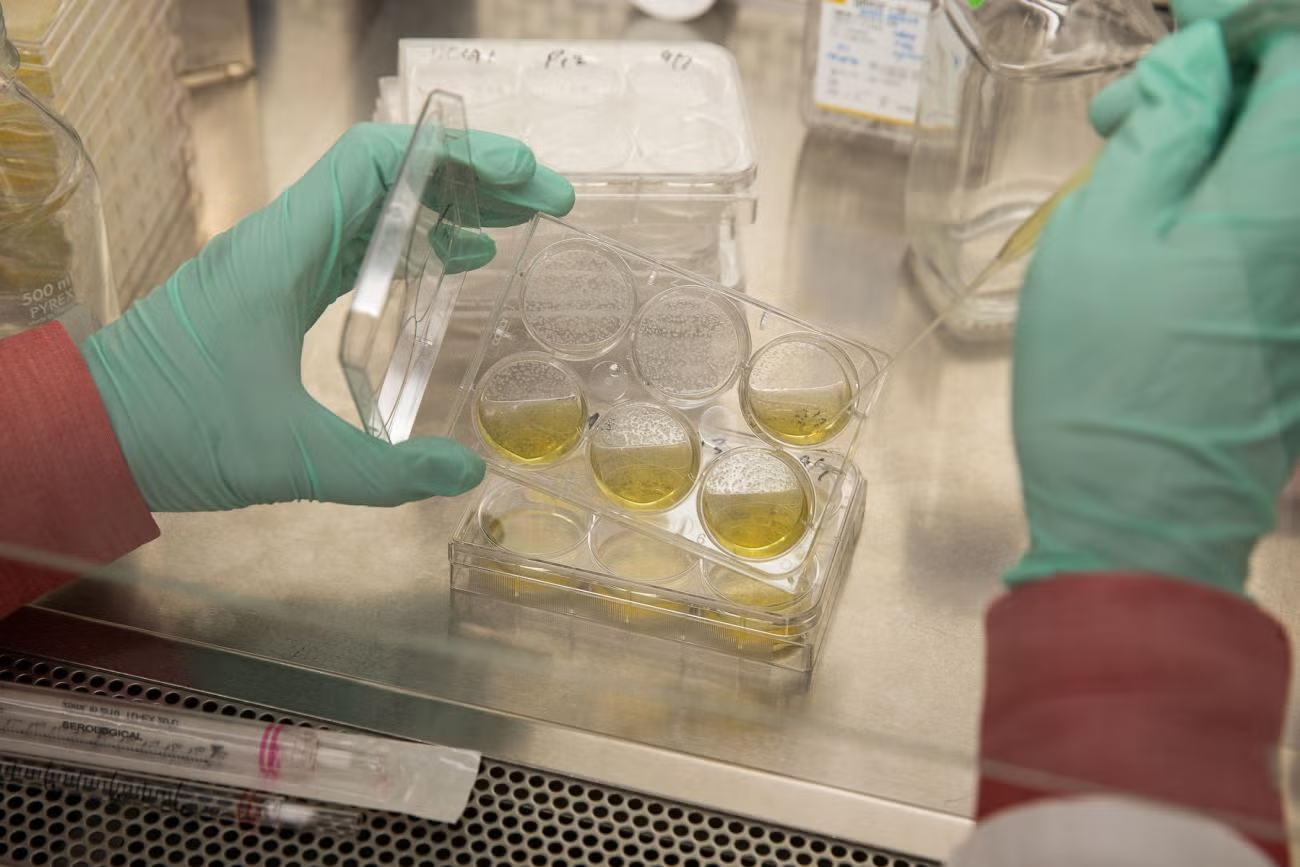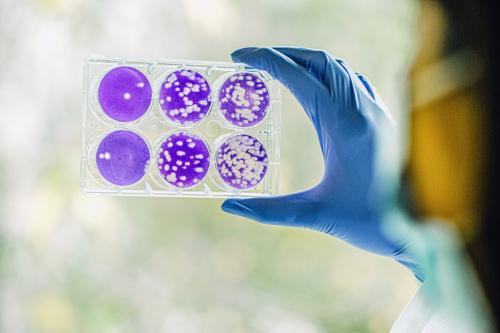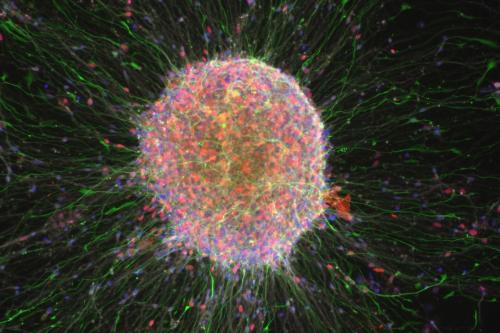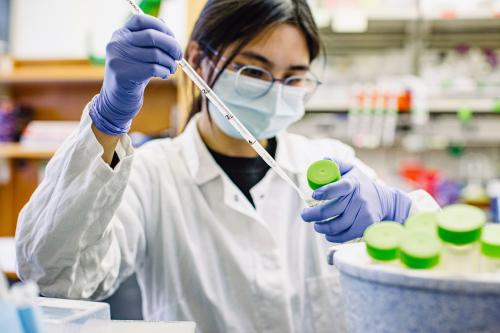
Glossary
Induced pluripotent stem cells
iPS cells are cells taken from a patient that are reprogrammed so that they can undergo differentiation The process by which stem cells transform into specific, specialized cell types with distinct functions and features. differentiation The process by which stem cells transform into specific, specialized cell types with distinct functions and features. into any type of cell in the body. By maintaining the genetic code of the patient, iPS cells play a crucial role in disease modeling and regenerative medicine A field focused on developing and applying new therapies and techniques to repair, replace or regenerate tissues and organs and restore function that has been lost due to aging, disease, injury or genetic defects. regenerative medicine A field focused on developing and applying new therapies and techniques to repair, replace or regenerate tissues and organs and restore function that has been lost due to aging, disease, injury or genetic defects..
Induced pluripotent stem cells are derived from skin or blood cells that have been reprogrammed back into an embryonic-like pluripotent state that enables the development of an unlimited source of any type of human cell needed for therapeutic purposes. For example, iPSC can be prodded into becoming beta islet cells to treat diabetes, blood cells to create new blood free of cancer cells for a leukemia patient or neurons to treat neurological disorders.
Using iPSC technology, center researchers have reprogrammed skin cells into active motor neurons, egg and sperm precursors, liver cells, bone precursors, and blood cells. In addition, patients with untreatable diseases such as, ALS, Rett syndrome, Lesch-Nyhan syndrome, and Duchenne muscular dystrophy donate skin cells to our center for iPSC reprogramming In stem cell research, scientists can reprogram cells that have undergone differentiation, such as skin or blood cells, to revert back into an embryonic-like state. The resulting cells are called induced pluripotent stem cells. reprogramming In stem cell research, scientists can reprogram cells that have undergone differentiation, such as skin or blood cells, to revert back into an embryonic-like state. The resulting cells are called induced pluripotent stem cells. research. The generous participation of patients and their families in this research enables our scientists to study these diseases in the laboratory in the hope of developing new treatment technologies.
Research Highlight
UCLA researchers trailblaze cell reprogramming efforts
In late 2007, center researchers Drs. Kathrin Plath, William Lowry, Amander Clark, and April Pyle were among the first in the world to create human induced pluripotent stem cells. At that time, science had long understood that tissue-specific cells, such as skin cells or blood cells, could only create other like cells. With this groundbreaking discovery, iPSC research has quickly become the foundation for a new regenerative medicine.



